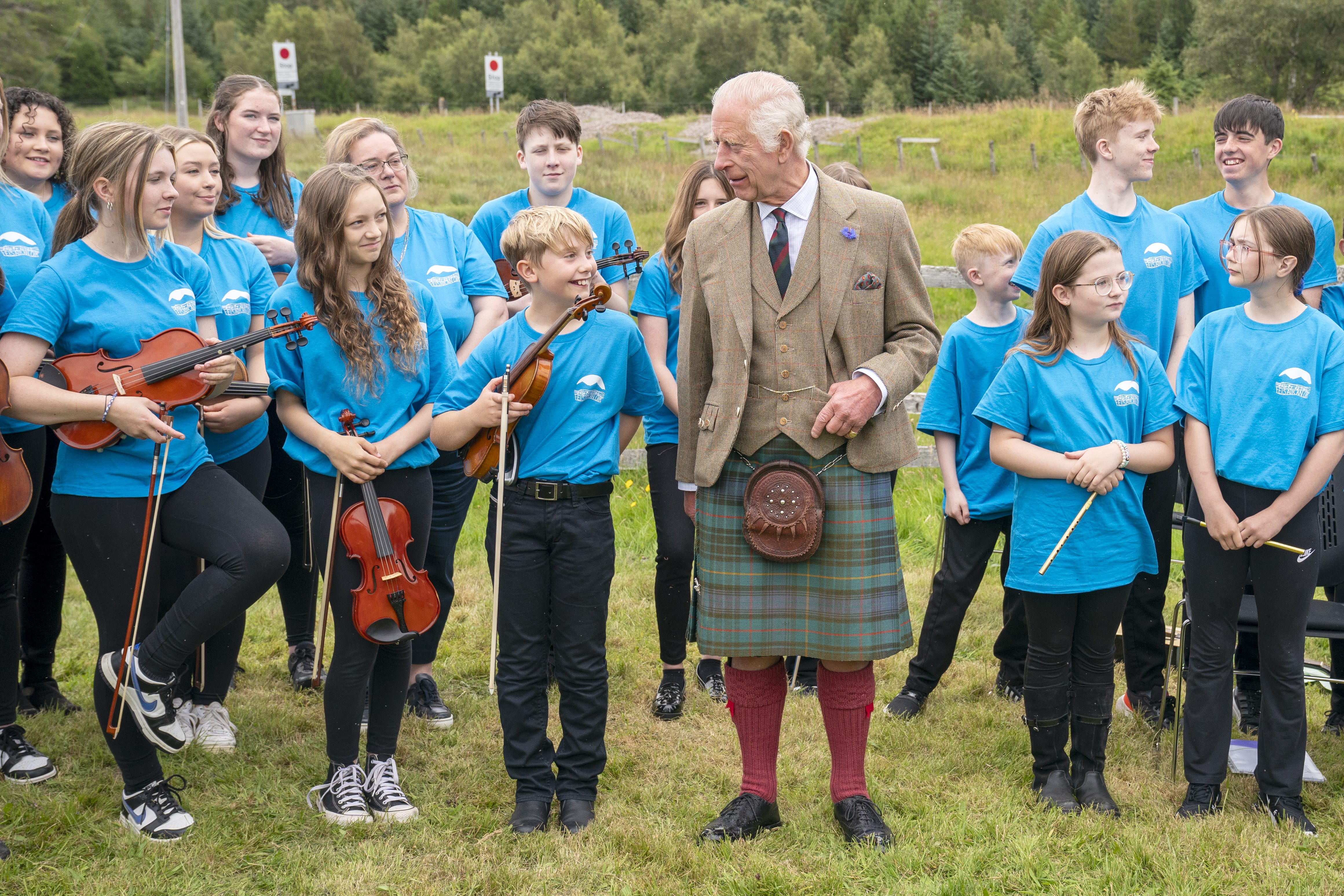King battles midges on visit to Highland peat bog declared world heritage site
Charles toured Forsinard Flows Visitor Centre in Sutherland and met staff and members of the local community.

Your support helps us to tell the story
From reproductive rights to climate change to Big Tech, The Independent is on the ground when the story is developing. Whether it's investigating the financials of Elon Musk's pro-Trump PAC or producing our latest documentary, 'The A Word', which shines a light on the American women fighting for reproductive rights, we know how important it is to parse out the facts from the messaging.
At such a critical moment in US history, we need reporters on the ground. Your donation allows us to keep sending journalists to speak to both sides of the story.
The Independent is trusted by Americans across the entire political spectrum. And unlike many other quality news outlets, we choose not to lock Americans out of our reporting and analysis with paywalls. We believe quality journalism should be available to everyone, paid for by those who can afford it.
Your support makes all the difference.The King battled midges as he visited a giant peat bog recently given Unesco world heritage site status.
Charles arrived at the vast expanse of peatland at Forsinard Flows, Forsinard, Sutherland, on Wednesday, with many well-wishers waiting to greet him wearing veils to deter the pests.
The King wore traditional Highland dress including a Sgian Dubh – a dagger hidden in his sock – and had a cornflower in the lapel of his tweed jacket as he unveiled a plaque commemorating the area last week becoming the seventh world heritage site in Scotland and the 35th in Britain.
The Flow Country is widely considered to be the largest area of blanket bog in the world and covers about 1,500 square miles in the Highlands, and it is estimated to store about 400 million tonnes of carbon dioxide – more than is stored by all UK woodlands combined.
Charles, a renowned nature lover who is patron of the Royal Society for the Protection of Birds (RSPB), met representatives of the charity, as well as from NatureScot – which led the bid for Unesco recognition – and Highland Council.
He was given a tour of the Forsinard Flows Visitor Centre and met staff from the Flow Country Partnership, which was formed in 2006 to restore the peatland after damage from forestry and drainage.
Charles took on the patronage of the RSPB following the death of his mother, Queen Elizabeth II, and was thanked for his efforts by a volunteer, who said: “Thank-you so much, we are very grateful.”
The King signed a book inside the visitor centre, and joked: “I’m hoping that my pen is going to work. It doesn’t usually.”
He said he needed to use ink which does not fade and added: “Or I get sent back to sign it again.”
Charles was spotted removing a handkerchief from his sporran as he toured a community festival in a field and met families who live nearby.
He admired a firepit where venison burgers were being cooked and served with homemade condiments including blackcurrant ketchup, and he joked: “I hope the venison burgers are up to standard.”
He was given a saddle of venison to take home by the caterers.
A children’s orchestra, Feis air an Oir – Gaelic for Festival on the Edge – performed for the King, with many children playing the fiddle.
Some songs were performed in Gaelic including Sine Bhan, while Mairi’s Wedding was sung in English.
The King posed for a group photograph with the young musicians.
Charles unveiled a commemorative plaque, covered by a tweed blanket, which was guarded by a young cadet.
Two siblings who sang for him said they were delighted to have met the King for the first time.
Esther Spratt, 10, and brother Eli, seven, from Strathy, both performed in Feis air an Oir.
Esther said: “It was exciting – he said something about the midges.”
Eli added: “Probably the most exciting part was the first time seeing King Charles.”